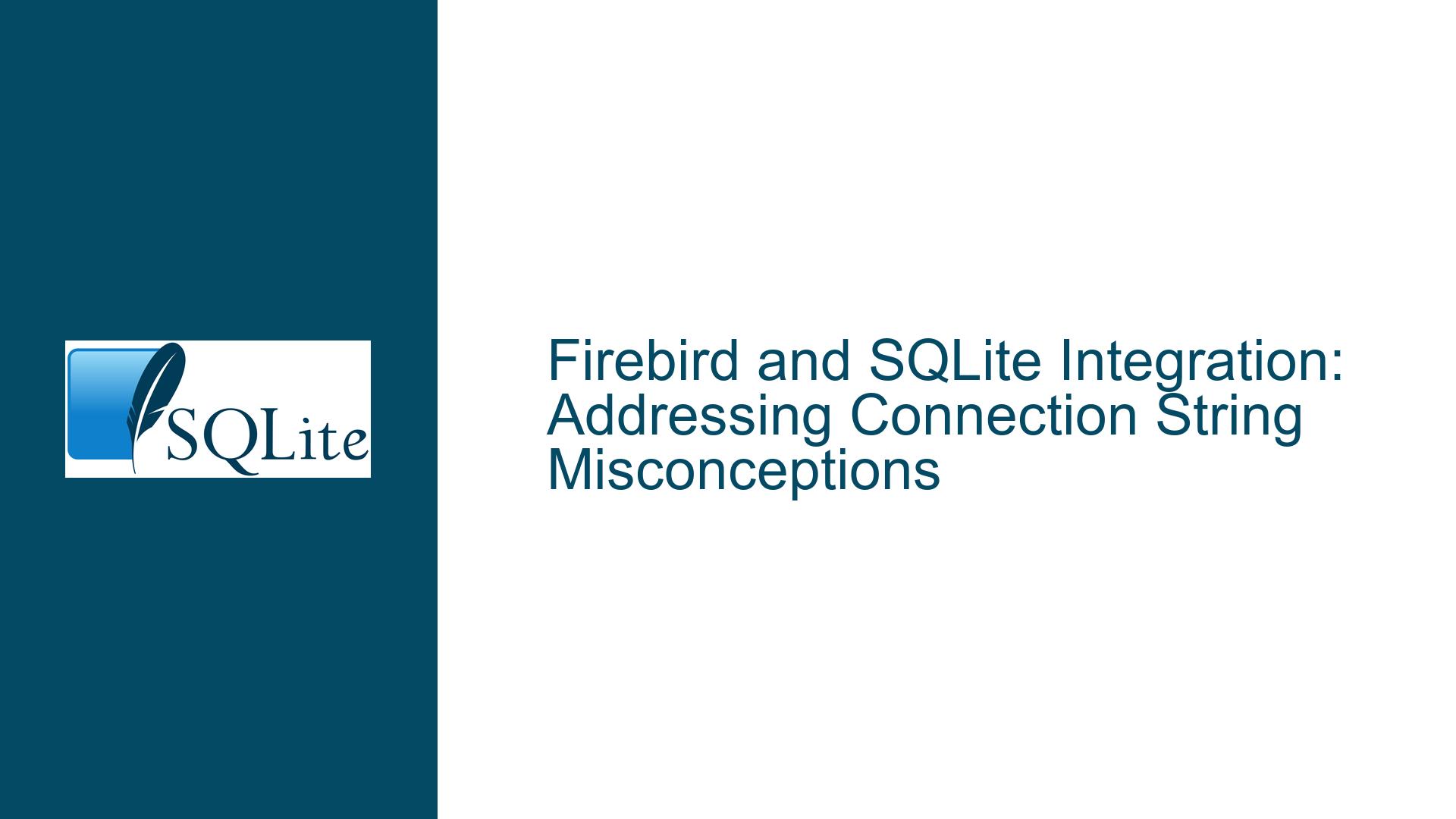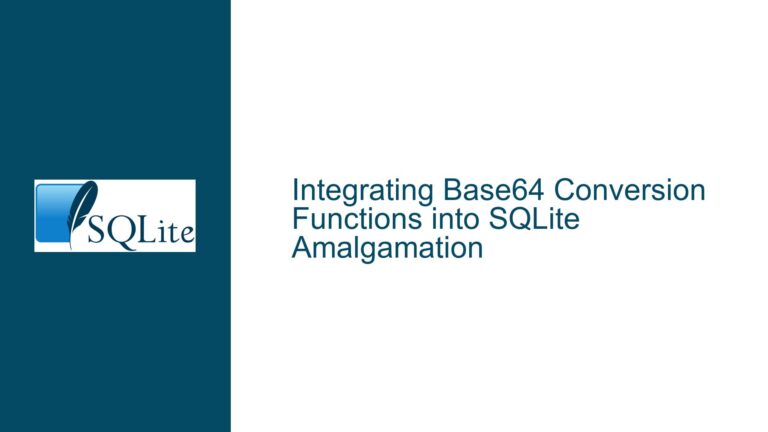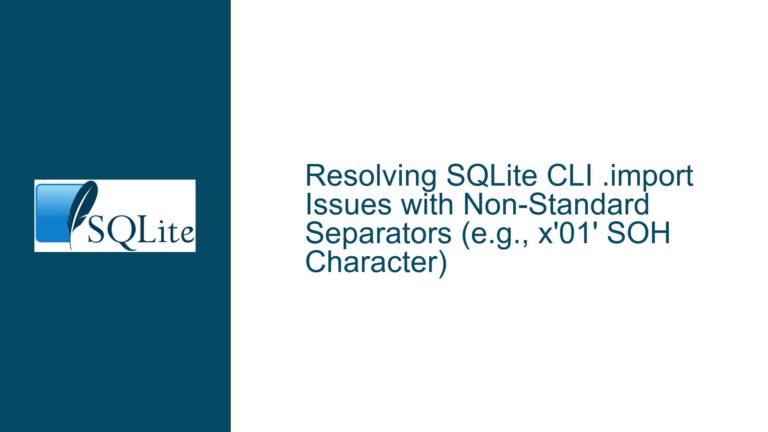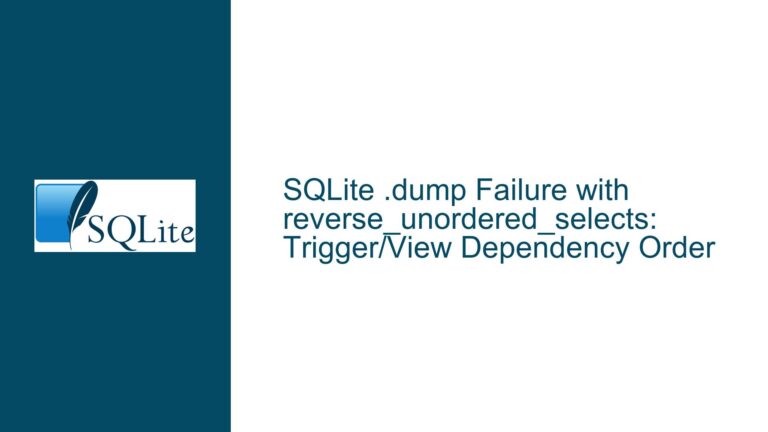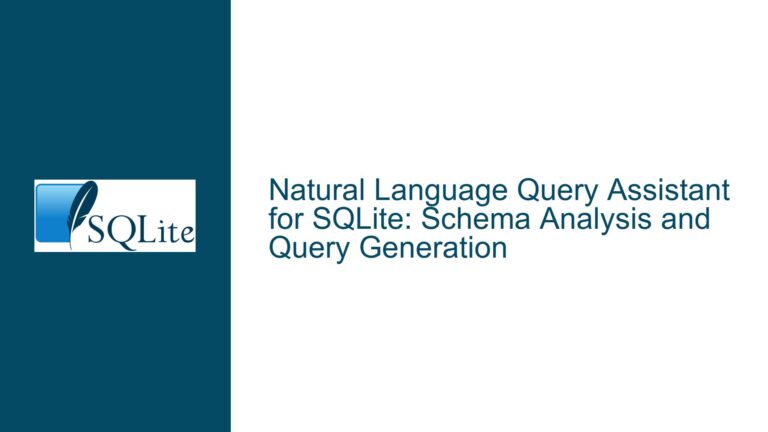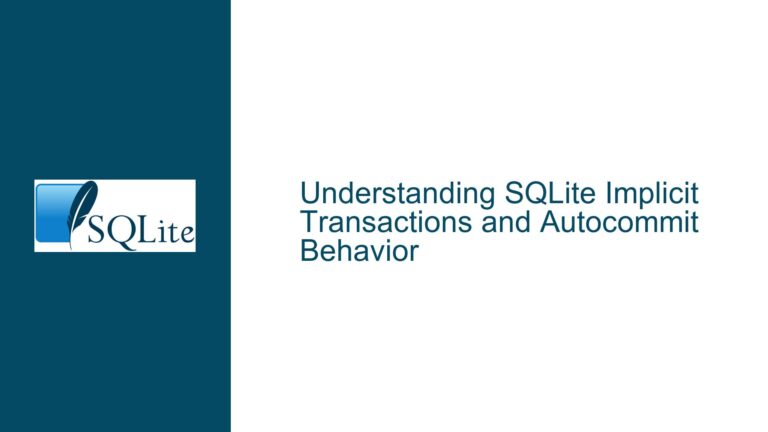Firebird and SQLite Integration: Addressing Connection String Misconceptions
Understanding the Architectural Divide Between Firebird and SQLite
Firebird and SQLite are fundamentally distinct database systems with unique architectures, making direct interoperability impossible. Firebird operates as a relational database management system (RDBMS) that supports client-server models, multi-user environments, and transactional operations across networks. SQLite, by contrast, is an embedded, serverless, file-based database engine designed for single-user applications where simplicity and portability are prioritized. The confusion often arises when developers attempt to treat these systems as interchangeable or assume they can communicate directly via a shared connection string. This misconception stems from a lack of clarity about how databases operate within application ecosystems. A connection string is a configuration parameter specific to a single database instance; it cannot bridge two separate database engines. For example, a Firebird connection string specifies details like server IP, port, database file path, and authentication credentials, while a SQLite connection string typically points to a local file path. Attempting to merge these into a single connection mechanism violates the operational boundaries of both systems.
The core issue is not about connection strings but about application-level integration strategies. Developers must recognize that Firebird and SQLite exist in separate silos and design their software to handle interactions with each database independently. This involves creating separate connection objects, executing queries against each database in isolation, and implementing logic to synchronize or migrate data between them. For instance, a VB .NET application might use the Firebird .NET Data Provider to connect to a Firebird database and the System.Data.SQLite library to interact with a SQLite database. These connections operate in parallel, with no inherent ability to join tables across databases in a single query. The challenge lies in orchestrating data flows between these systems while respecting their architectural constraints.
Root Causes of Firebird-SQLite Integration Challenges
1. Misunderstanding Database Roles and Use Cases
Firebird is often deployed in scenarios requiring concurrent access, transaction logging, and user permissions, such as enterprise applications. SQLite thrives in embedded systems, mobile apps, or lightweight desktop tools where a single file suffices for storage. Developers unfamiliar with these distinctions may incorrectly assume that Firebird’s server capabilities can "extend" to SQLite or vice versa. This leads to misguided attempts to force a unified connection framework.
2. Ambiguity in Connection String Semantics
Connection strings are engine-specific, yet their syntax variations are subtle. A Firebird connection string might resemble Server=localhost;Database=/path/fb_db.fdb;User=sysdba;Password=masterkey, while a SQLite string could be Data Source=/path/sqlite_db.sqlite;Version=3;. Novice developers might conflate these formats, attempting to use Firebird parameters (e.g., Server, User) in a SQLite context or omitting SQLite’s Data Source directive. Such errors result in runtime exceptions like "Invalid connection string format" or "Unable to open database file."
3. Lack of Native Cross-Database Query Support
Neither Firebird nor SQLite provides built-in functionality to reference external databases in SQL statements. In contrast, systems like PostgreSQL support foreign data wrappers, and SQL Server allows linked servers. Without analogous features, developers must manually extract data from one database and insert it into the other, often through intermediate data structures like DataTables or CSV files. This process is error-prone and inefficient if not optimized.
4. Tooling and Driver Misconfiguration
Firebird requires the .NET Data Provider or ODBC driver to be installed and referenced in the project. SQLite relies on libraries like Microsoft.Data.Sqlite or System.Data.SQLite. Omitting these dependencies or using incompatible versions leads to "provider not found" errors. For example, a VB .NET application targeting .NET Core might fail if the SQLite provider isn’t explicitly added via NuGet.
Strategies for Bridging Firebird and SQLite in Applications
1. Establish Separate Database Connections
Create distinct connection objects for Firebird and SQLite within the application. In VB .NET:
Imports FirebirdSql.Data.FirebirdClient
Imports System.Data.SQLite
' Firebird connection
Dim fbConn As New FbConnection(
"Server=localhost;Database=fb_db.fdb;User=sysdba;Password=masterkey")
fbConn.Open()
' SQLite connection
Dim sqLiteConn As New SQLiteConnection(
"Data Source=sqlite_db.sqlite;Version=3;")
sqLiteConn.Open()
Ensure each connection uses the correct namespace and driver. Firebird connections require the FirebirdSql.Data.FirebirdClient assembly, while SQLite uses System.Data.SQLite.
2. Implement Data Migration Pipelines
To transfer data between databases, use a batch process:
- Query data from Firebird into a
DataTable. - Iterate through rows and construct INSERT commands for SQLite.
- Handle data type conversions explicitly (e.g., Firebird’s
TIMESTAMPto SQLite’sTEXT).
Dim fbCmd As New FbCommand("SELECT * FROM FirebirdTable", fbConn)
Dim fbReader As FbDataReader = fbCmd.ExecuteReader()
Dim sqLiteCmd As New SQLiteCommand(sqLiteConn)
While fbReader.Read()
sqLiteCmd.CommandText =
$"INSERT INTO SQLiteTable (Column1, Column2) VALUES ('{fbReader(0)}', '{fbReader(1)}')"
sqLiteCmd.ExecuteNonQuery()
End While
3. Leverage Transactional Consistency
Wrap migration steps in transactions to prevent partial updates:
Dim sqLiteTrans As SQLiteTransaction = sqLiteConn.BeginTransaction()
Try
' ... migration logic ...
sqLiteTrans.Commit()
Catch ex As Exception
sqLiteTrans.Rollback()
End Try
4. Utilize Middleware or ETL Tools
For large-scale data synchronization, employ Extract-Transform-Load (ETL) tools like Talend or Pentaho. These tools can map Firebird fields to SQLite columns, automate scheduling, and log errors.
5. Address Schema Incompatibilities
Firebird and SQLite have differing SQL dialects and schema constraints. For example:
- Firebird uses
GENERATED BY DEFAULT AS IDENTITYfor auto-increment columns; SQLite usesAUTOINCREMENT. - SQLite lacks native support for stored procedures, which are common in Firebird.
Remediate these gaps by:
- Modifying schema scripts during migration.
- Replacing Firebird stored procedures with application-level logic in VB .NET.
6. Debugging Common Connection Errors
- "Unable to find Firebird client library": Install the Firebird ADO.NET provider and ensure
fbclient.dllis accessible. - "SQLite database is locked": Ensure the SQLite connection is closed after operations or use
Pooling=Falsein the connection string. - "Invalid username/password" for Firebird: Verify that the user has
SYSDBAprivileges and the server’sfirebird.confallows remote connections.
7. Performance Optimization
- Use Firebird’s
FETCH FIRST N ROWSclause to paginate large datasets. - Enable SQLite’s write-ahead logging (WAL) mode for faster inserts:
PRAGMA journal_mode=WAL; - Bulk insert into SQLite with
SQLiteTransactionand parameterized commands.
By dissecting the architectural boundaries, diagnosing configuration pitfalls, and implementing robust data transfer mechanisms, developers can effectively integrate Firebird and SQLite within a single application. The key is to respect each database’s operational domain and orchestrate interactions through deliberate application logic rather than seeking nonexistent direct connectivity.
